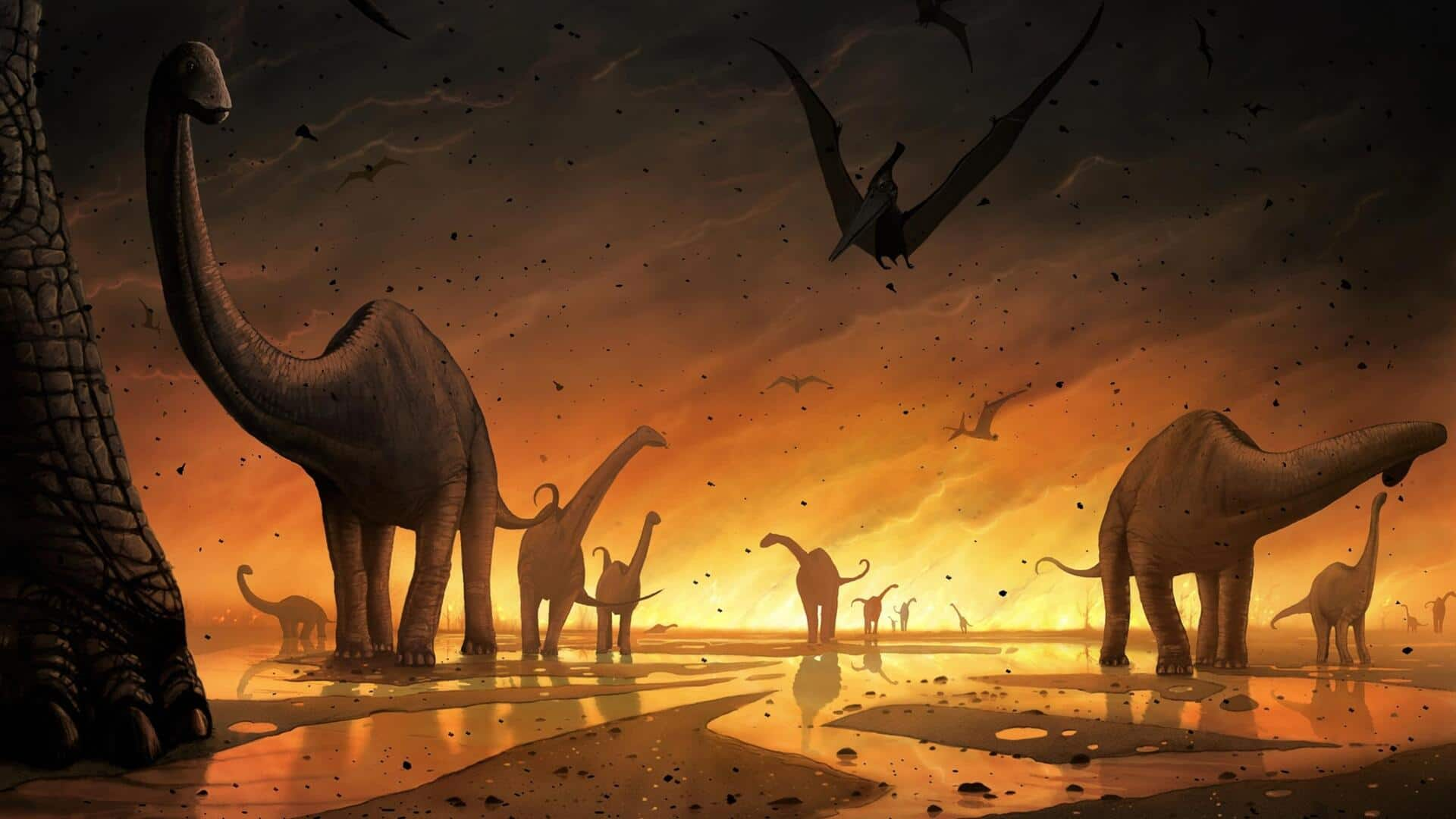
Dinosaurs were flourishing just before mass extinction, new study claims
What's the story
A new study challenges the long-held belief that dinosaurs were on a decline before their mass extinction around 66 million years ago. The research, led by Dr. Andrew Flynn from New Mexico State University, suggests that these prehistoric creatures were actually thriving until the catastrophic asteroid impact. The findings were published in the journal Science and could change our understanding of dinosaur extinction.
Research methods
Dating the rock formation
The study focused on a specific rock formation, the Naashoibito Member in the San Juan basin of New Mexico. The team used two techniques to date this geological unit. The first was analyzing the ratio of two argon isotopes within crystals found in the rock, giving an upper limit for its age. The second method involved studying how magnetic particles were aligned within material forming this rock, which indicates Earth's magnetic field direction at that time.
Findings
Regional differences in dinosaur species
The research found that the section of the Naashoibito Member with the youngest dinosaur fossils was formed about 400,000 years before the mass extinction event. This suggests that dinosaurs were more diverse during this period than previously thought. The study also highlights regional differences in North American dinosaurs, possibly due to climate variations.
Climate impact
Climate's role in dinosaur distribution
The research highlights that while some dinosaur species were common across North America, others were unique to specific regions. This variation is thought to be influenced by climate differences. For instance, the northern part of North America was home to many horned dinosaurs and duck-billed dinosaurs like Edmontosaurus. In contrast, the southern region had different duck-billed dinosaurs with elaborate crests and massive long-necked sauropods such as Alamosaurus.
Expert opinions
Expert opinion on research findings
The study's findings have been welcomed by experts, including Prof. Michael Benton from the University of Bristol. He said, "The new evidence about these very late-surviving dinosaurs in New Mexico is very exciting." However, Benton also cautioned that this research only looked at one location and may not represent the complexity of dinosaur species across North America or globally.